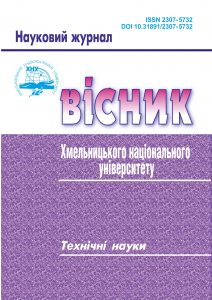ANALYTICAL STUDIES OF THE PRESSING NOZZLE OF THE TWIN-SCREW PRESS FOR FEED DEHYDRATION
DOI:
https://doi.org/10.31891/2307-5732-2023-327-5-204-209Keywords:
twin screw press, wringer nozzle, fodder, humidity, parameters, physico-mathematical model, pressure, tension, distributionAbstract
Technological equipping is an important storage part of a double-screw press for squeezing highly moist fodder. The quality of squeezing these feeds, which are viscous-plastic materials, by the method of pressing with screw working bodies depends on the rational and optimal choice of the geometry of the squeezing nozzle and the density of the distribution of filter holes.
The theoretical justification of the design parameters of the pressing nozzle is based on the rheological properties of high-moisture feed, in particular on the example of beer pellet. However, the pressing of beer pellet is a complex process, the description of its non-stationary behavior during movement in the pressing nozzle of a screw press is difficult to carry out. In addition, the properties of beer pellet change during pressing, related to the degree of compaction of the material. The main feature of the pressing process is the accompanying deformation, which affects the permeability of the channels of the solid phase.
This feature makes it difficult to obtain adequate mathematical relationships and analysis of pressing and squeezing processes. Accordingly, without an accurate mathematical description, it becomes difficult to design presses of new designs.
The purpose of the research is to develop a physical-mathematical model of the process of interaction between the surface of the extraction nozzle and the processed raw material (beer pellet).
A physico-mathematical model was developed that describes the interaction of the surface of the extraction nozzle with the processed raw material, in particular, beer pellet. This model established a relationship between the pressure distribution in the contact zone between the medium and the surface of the nozzle and its design parameters. The geometry of the surface of the wringer nozzle was described as an exponential function with a step factor of k = 0.0065 mm-1. Density of the distribution of filter holes along the length was L = 210 mm, taking the required production capacity.

